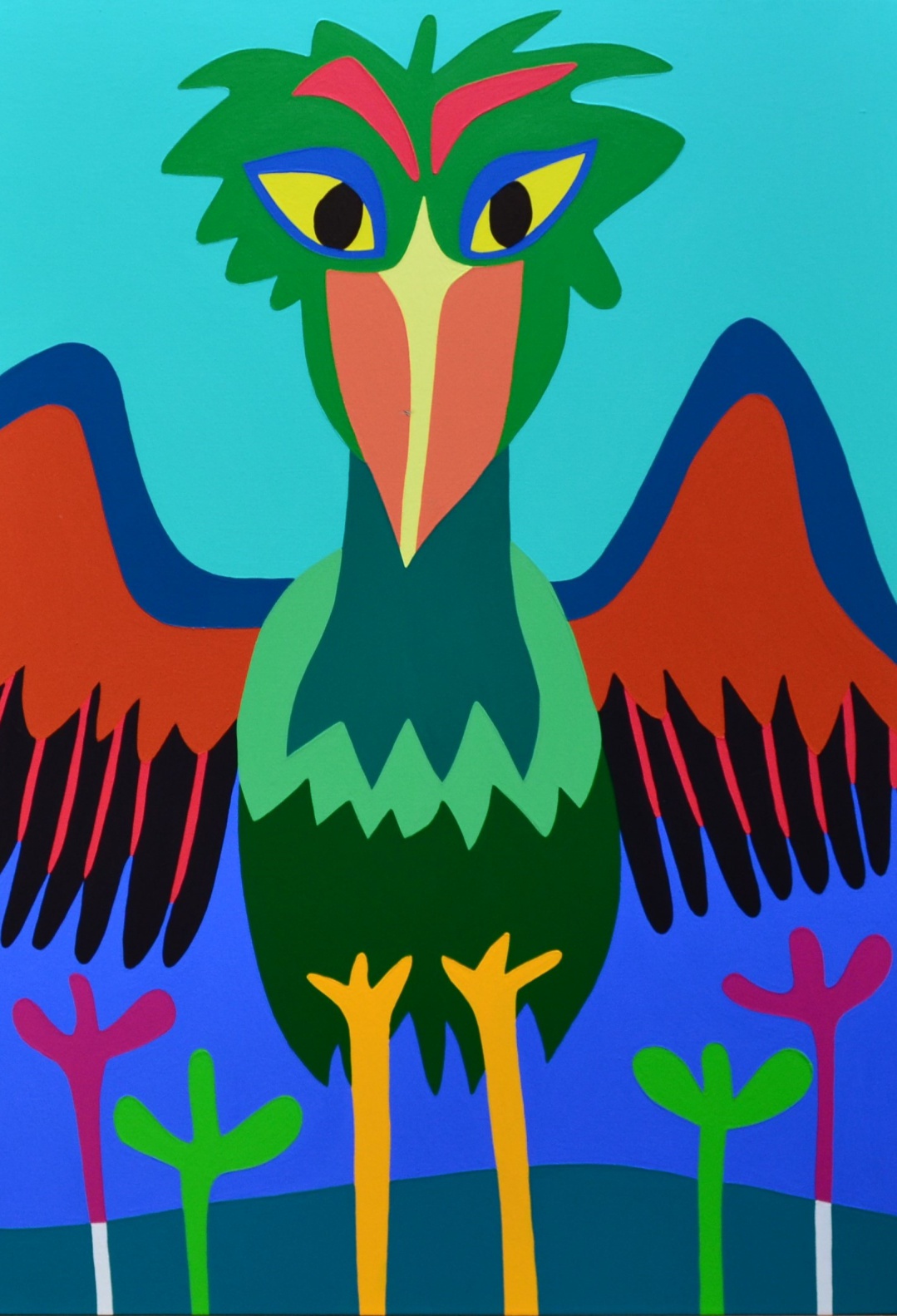Gonzalo once again surprises us with a work of art and shares his inspiration:
“The Shoebill is one of the most enigmatic and fascinating aquatic birds of the Mother Continent, Africa. Its appearance carries the memory of the dinosaurs (Balaeniceps rex) and, through it, we can read the history of evolution. Its lineage goes back to very ancient times.”
Its evolution is truly extraordinary: it teaches us about patience, precision, and calmness. Considered the largest of the wading birds, it inhabits swamps and coastal areas of East Africa—South Sudan, Uganda, Tanzania, and Zambia—where it finds its favorite food: fish, frogs, snakes, eels, small mammals, and even baby crocodiles.
Laughter and Joy in the Classroom
While the artwork was being created, the artist engaged his audience, as he often does, so that the children could also take part in the creation by choosing a name for this new character.
After receiving several suggestions, Gonzalo finally christened his Shoebill “PICOLÍN.”
The name was chosen as a team by the children of the “Abejitas” classroom, when their teacher Karina presented it to them. The children are 4- and 5-year-old students from the afternoon shift at Kindergarten No. 47 in the province of Corrientes—capital city, Argentina.
“What caught our attention the most was its big beak,” said the teacher. From there, the children began imagining names, and later studied the bird in depth to represent it through drawings.
The Art of Patience
The Shoebill is a master of waiting. It can remain motionless for hours, in a state that seems like trance or meditation, until it suddenly and decisively strikes its prey. Its vision is exceptional, its silence absolute, and its enormous beak—resembling a Dutch clog—is the perfect tool to capture with precision.
An Example of Resilience
Gonzalo affirms:
“The Shoebill is a true example of resilience. Its hunting skill and extreme patience have allowed it to survive for millions of years. Through it, nature shows us the importance of perseverance and the wisdom of evolutionary merit.”
Fossils of its ancestors dating back to the Oligocene and early Miocene have been found, revealing its permanence throughout millions of years.
Conservation Status
Currently, the species is classified as vulnerable. There are between 5,000 and 8,000 individuals left in the wild, threatened by habitat loss, poaching, pollution, and climate change.
A solitary and territorial bird, it only socializes during breeding and chick-rearing. To defend itself or mark its presence, it produces an unmistakable sound, similar to that of a machine gun.
A Lesson for Humanity
The Shoebill is not only a biological treasure: it is also a reminder of the interconnectedness of species within ecosystems. Its regulatory role over the populations of its prey contributes to natural balance.
Its majestic, patient, and resilient figure inspires us to value the diversity of life and to learn from the wisdom of nature.
Now, PICOLÍN THE SHOEBILL is art, joy, enthusiasm, and knowledge in the classroom…

